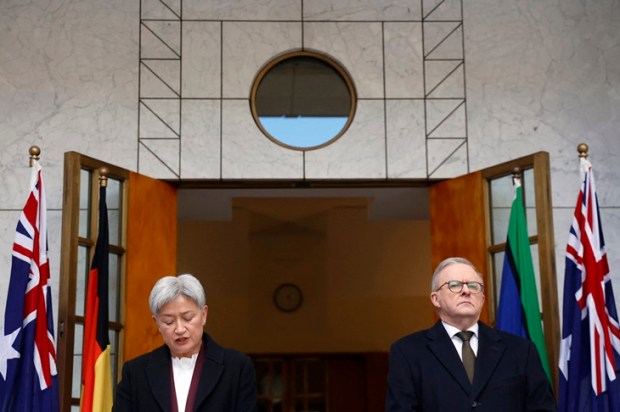A recent article in Car Expert claims, ‘almost half of Australian EV owners would go back to petrol [and] diesel’ instead of keeping their shiny new planet-saving cars.
It is based on a Mobility Consumer Pulse report filled out by 30,000 car owners around the world.
When it comes to the Australians, 49 per cent were apparently falling out of love with EVs and eyeing off their old combustible flame.
Considering Australia’s size and relative infancy when it comes to EV infrastructure, it’s not surprising that we did the poorest when it comes to enthusiasm.
High on the problem list was that old thorn of range anxiety. Owners also expressed difficulty when it came to finding reliable charging on long journeys. This is hardly surprising given the booming market in copper theft where thieves strip EV chargers of their wiring.
Not only are Australians frustrated by public charging facilities, it’s not easy to charge their beloved vehicles at home. Plenty of apartment buildings forbid EVs – not only from charging – but from parking underground due to insufficient fire safety standards and the very real fear that an EV fire could cause a serious incident.
One of the more amusing statistics from the report came from a lack of desire to try new technology. To quote:
‘Australians were also over-represented in the reasons holding them back from considering buying an EV, with 63 per cent of respondents saying they “don’t like to occupy themselves with new technology”, eight per cent higher than the average response globally.’
Not much you can do about an old dog refusing to learn new tricks, but the apartment problem is a biggie that Energy and Climate Change Minister Chris Bowen shies away from. With Labor’s ‘Big Australia’ plan tearing through our heritage-listed suburbs, ripping up protections, and bulldozing stand-alone homes to make way for high rises – more Australians than ever will be forced to live on top of each other.
This means charging EVs in underground carparks, packed in close, like little spontaneously combustible sardines. Do EVs frequently catch fire? No. But when they do, they create a huge problem.
My former apartment complex was located right in the middle of a Teal electorate. It strictly prohibited EVs from parking – let alone charging – in the underground carpark. Their message read:
Notice to all residents: No Charging of EV Cars in the Basement
Please be advised that charging you [sic] EV cars in the basement is currently not allowed due that the building has not been subject of a feasibility study for EV’s [sic] and there is no provision in the by-law for EV charging and no additional fire safety measures implemented.
The power points in the basement are intended only for the cleaning and maintenance of the common property, thus ALL residents of the building must adhere to the building by-laws for EV charging as per stipulated below.
In NSW, the climate-obsessed government, both under Liberal and Labor, has put in place what can only be described as ‘demands’ on strata to find a way to upgrade and accommodate EVs, even though the safety of hundreds of EVs sitting underneath a major apartment building, charging, has not been rigorously assessed.
And of course, the taxpayer is once again footing a significant portion of the bill.
According to the Energy NSW government website, ‘NSW Government is now providing co-funding to retrofit existing apartment buildings to make them EV ready. There’s $10 million available to assist eligible NSW apartment buildings by co-funding the assessment and installation of EV infrastructure upgrades. This funding is available through the EV ready buildings grant … the grant will co-fund 80 per cent (up to $80,000 per building) of eligible infrastructure costs. It will also cover 50 per cent (up to $1,200 per building) of eligible software subscription costs for 2 years.’
That is only the beginning of the bill for NSW taxpayers.
EV Super-Highways – co-investing in ultra-fast chargers at minimum 100km intervals across all major NSW highways – creating ‘EV Super-Highways’ across the State. This will support regional residents and businesses to share the benefits of EVs by improving their access to charging infrastructure and encouraging more city-based EV drivers to travel to regional areas, boosting local tourism.
EV Commuter Corridors – will ensure that households right across Sydney have no more than 5km to drive to the next ultra-fast EV charger, creating ‘EV Commuter Corridors’ right across the city.
EV off-street parking chargers – will support private industry to build new ultra-fast EV charging infrastructure in areas where drivers are not able to access private off-street parking – about 30% of drivers. This means households with limited off-street parking will live no more than 5km from a fast or ultra-fast charger under the Strategy.
Providing access to on-street EV charging for those without private car parking spots. This will help EV owners in high density areas by the co-funding of 500 kerbside charging options to ensure ease of access, convenience and flexibility.
We are investing $105 million to help NSW private businesses, not-for-profits and local councils accelerate their transition to EVs.
I mean, it’s just so cheap.
There’s an interesting article on Car Domain that goes into detail about the complexity of consent, cost-sharing, and infrastructure burden when it comes to EVs and apartment buildings.
Imagine how acrimonious the situation will be when all apartment owners are forced to cough up a fortune to provide some owners with EV charging. It’s hard enough to approval a cleaning schedule for the building, let alone indulge the climate cult fantasies of the privileged few.
The costs associated with equipping apartment complexes for EV charging, which must be shared among all owners, are indeed substantial. This collective financial burden, compounded by stringent regulations, presents a significant obstacle to the widespread implementation of EV infrastructure in established residential buildings.
Bowen’s EV dream is set to turn into a nightmare – just like his fleet of bird-mincing machetes.

























